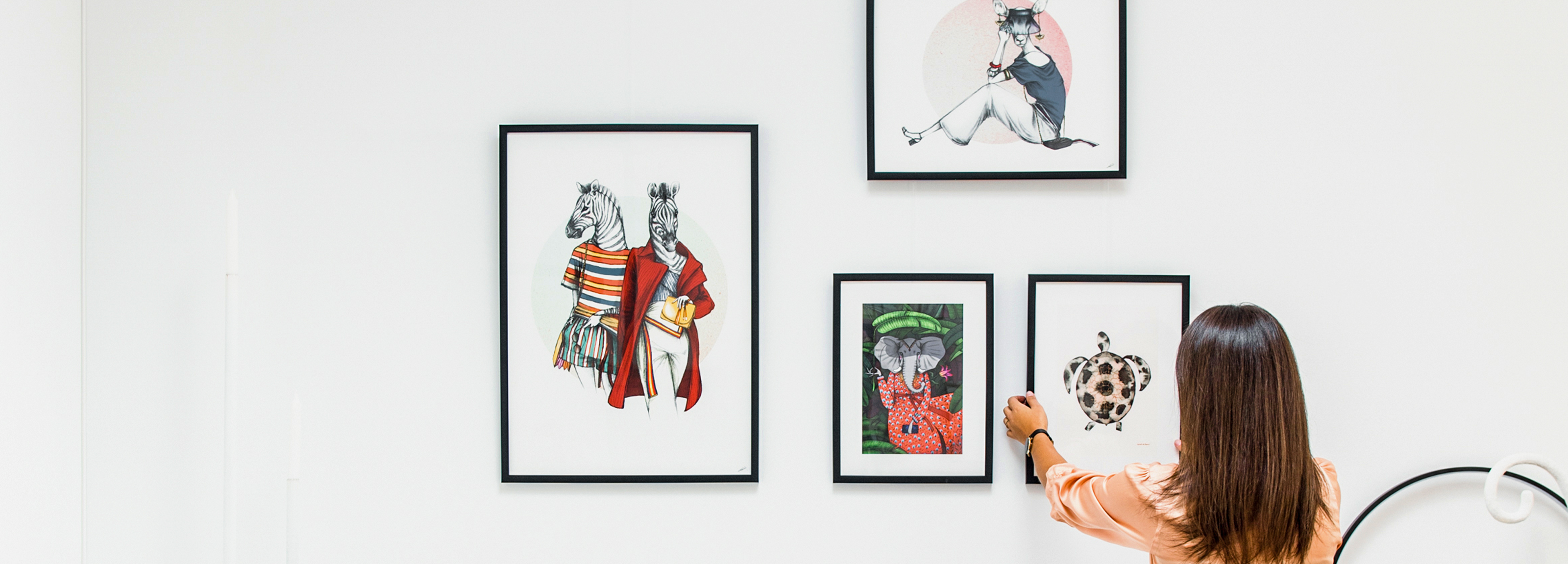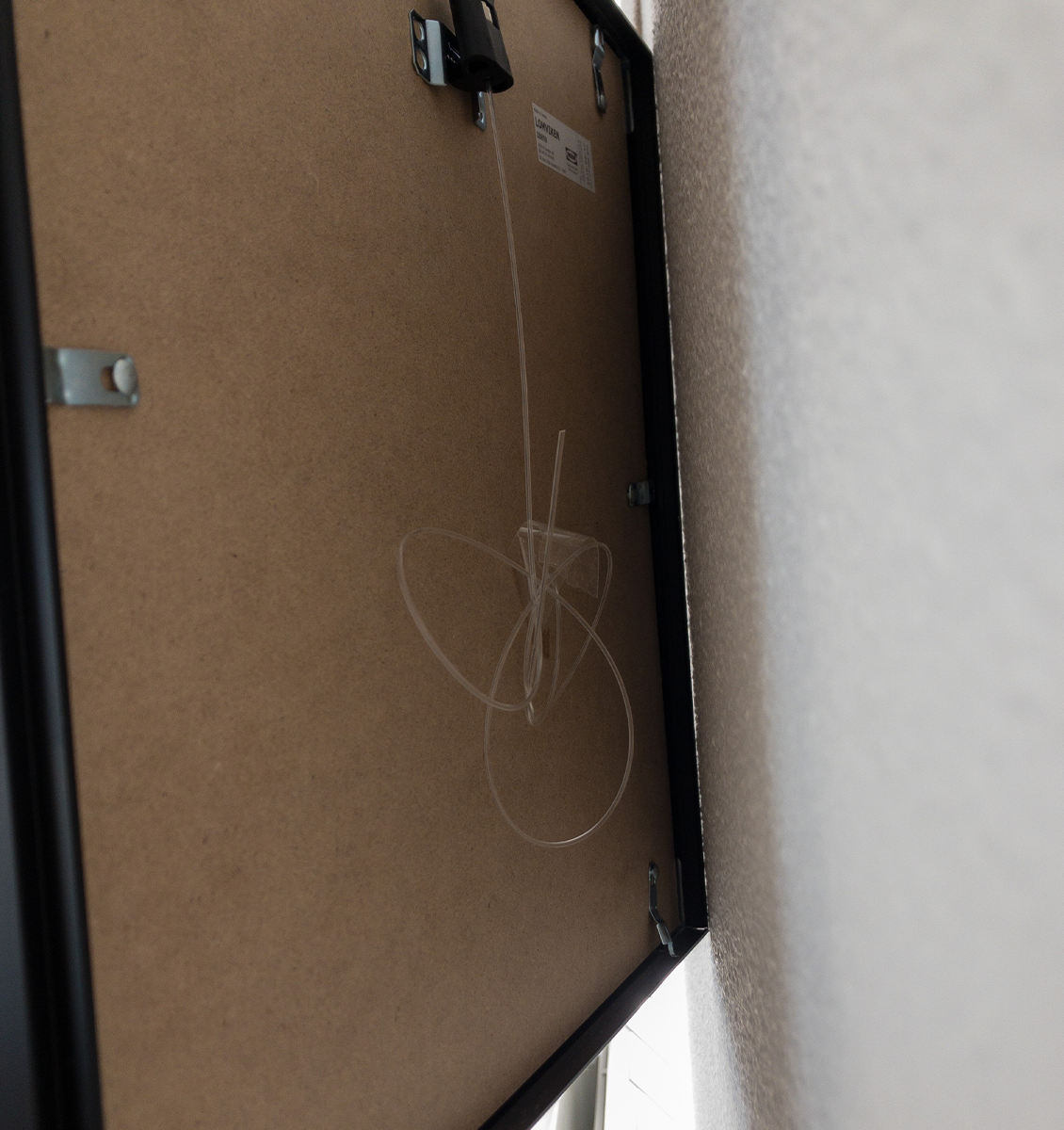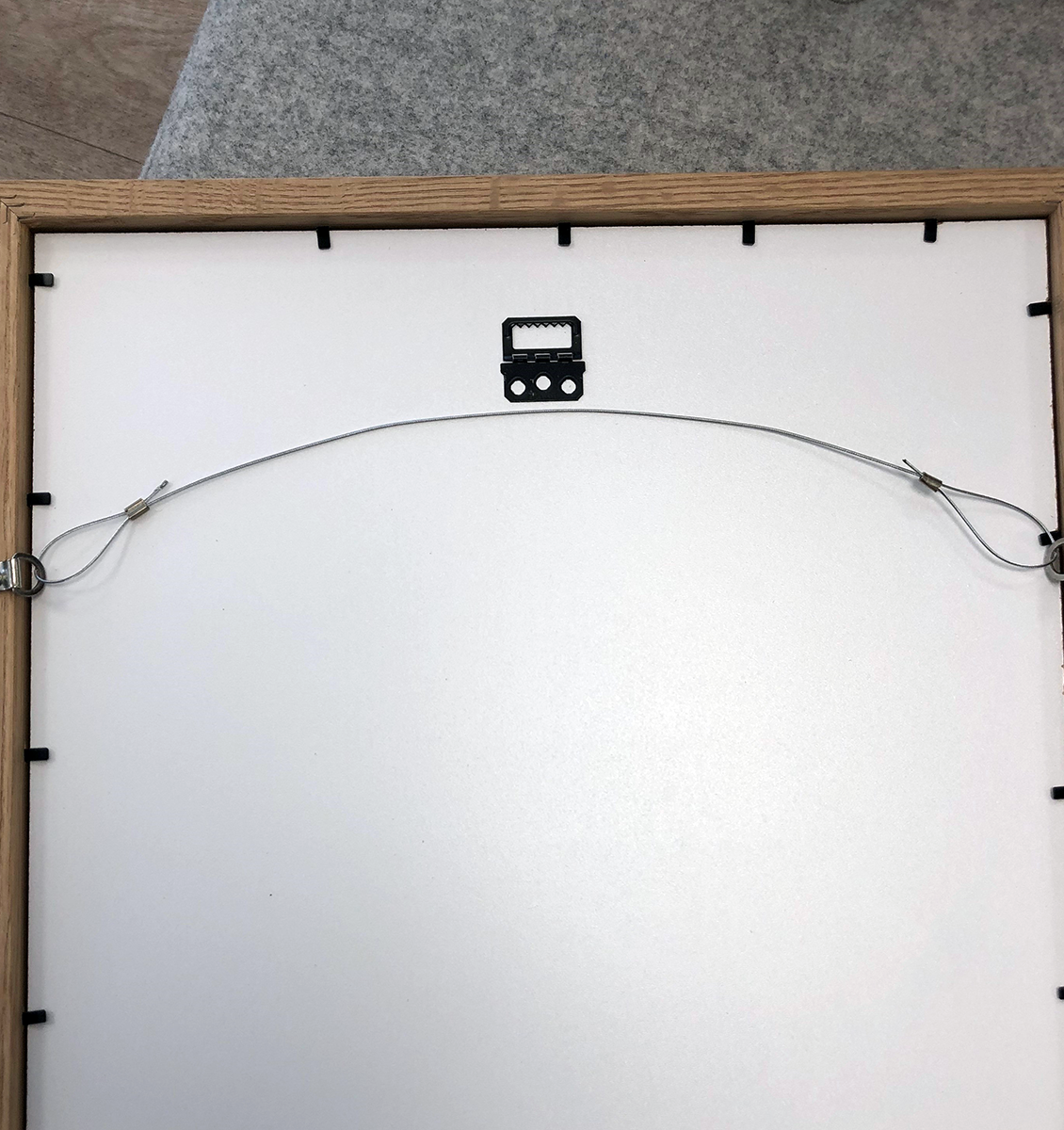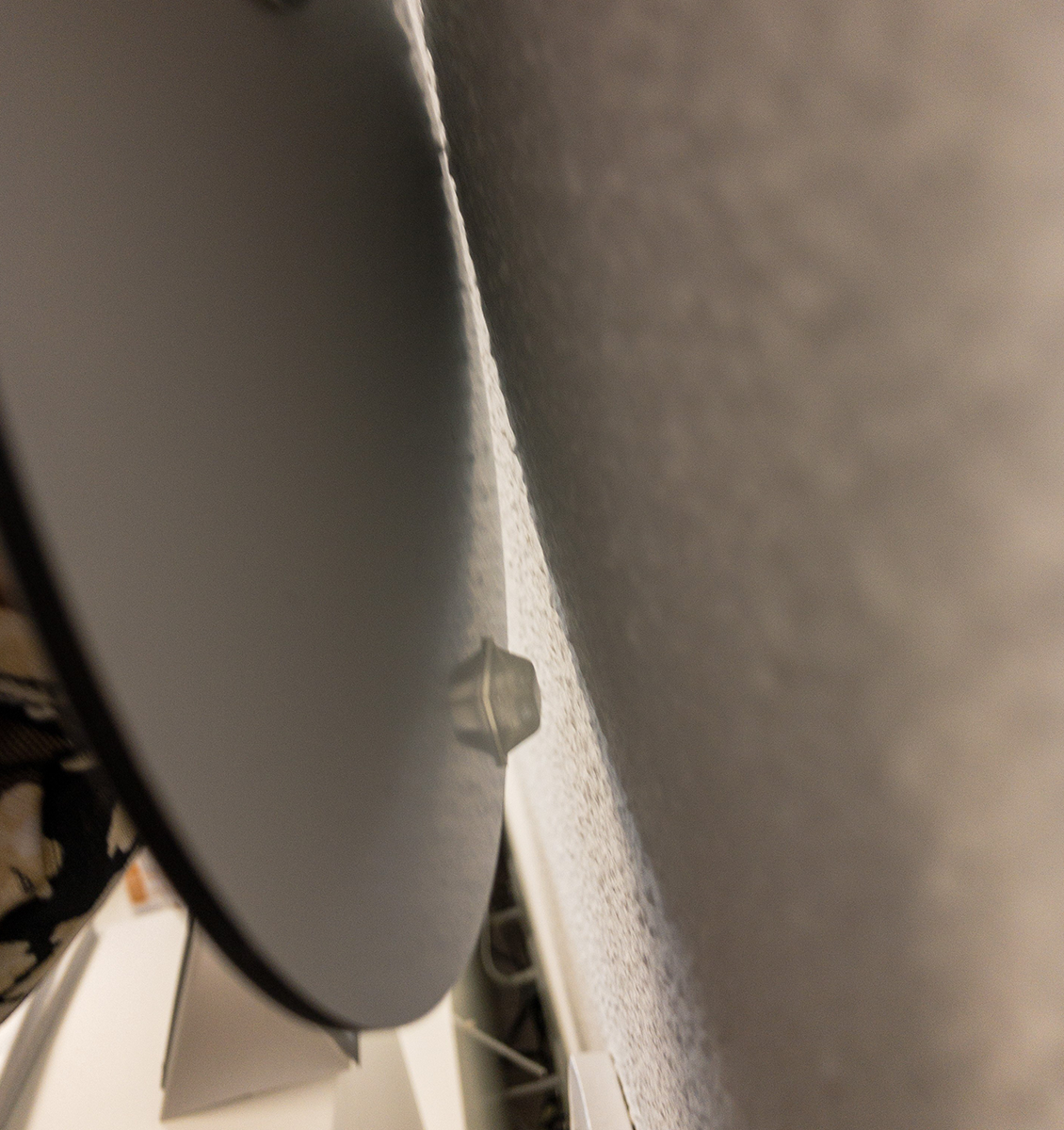
5 tips to stop frames from tilting
It can be quite difficult to hang and lay out your favourite frames, pictures and pieces of art on the wall. An Artiteq picture hanging system allows you to hang several frames, pictures and other pieces of art as a gallery wall. Especially when creating a gallery wall, it’s fun to play around by hanging frames together by size, or by type of wall decoration. When you use frames that vary in size, thickness and weight, certain frames may tilt. How can you stop these frames from tilting? As a hanging specialist, we have various tips to stop the frames from tilting, without this impacting your chosen frames or layout. Read our 5 tips below.
Tip 1. Why do frames tilt?
The size, thickness and the weight, as well as whether a short or long piece of hanging wire is used, all have an impact on the tilting of a frame. If the frame is thick, small or the weight is concentrated to the front, the frame can tilt forwards. If you use a long piece of hanging wire, which also makes the frame hang lower, this can also make the frame tilt forwards.
Tip 2. Use two hanging wires
The weight of the frame or other wall decorations determines the choice of hook and wire, in combination with the maximum weight carrying capacity of one metre of our picture hanging system. A frame will always hang more steadily if 2 hanging wires and 2 hanging hooks are used. When hanging several frames together on a hanging wire, we recommend using two hanging wires. This will reduce the tilting of the topmost frame. An additional advantage is that the maximum weight of the frame is then doubled.


Tip 3. Remove excess hanging wire
The perlon hanging wires and the steel wires are available in a 1-mm and 2-mm thickness and in lengths varying from 100 cm to 500 cm. Depending on which length of hanging wire is chosen, there is a significant chance that there will be excess hanging wire once the frames have been hung. You can cut off the excess wire, or roll this up and then stick this if you wish to the back of the frame. Use some tape or adhesive tape to stick the wire to the back of the frame. We recommend cutting off the excess wire if the frames are light, because the stiffness of the wire can push the frame forwards. The use of 1-mm hanging wires instead of 2 mm may also help because this isn’t as stiff.
Tip 4. Reposition the hanging point behind the frame
The location of the hanging point behind the frame will influence whether a frame will tilt. A frame will often tilt if the hanging point behind the frame is positioned too low. By relocating this to a higher position, you will stop the frame from tilting. The hanging wire will then be positioned as close as possible to the frame. If the hanging point is positioned at the edge of the frame, that can make the frame tilt. In this case, reposition the hanging point as far as possible to the front of the frame.


Tip 5. Use spacers on the back of the frame
Spacers are mounted on the back of the frame. Place these at the top and bottom of the frame, to push the frame slightly forwards and to prevent tilting. Artiteq offers self-adhesive transparent, or foam spacers. The foam spacer is a little thicker. Both types of spacers are made from soft materials to prevent damage to the walls.

